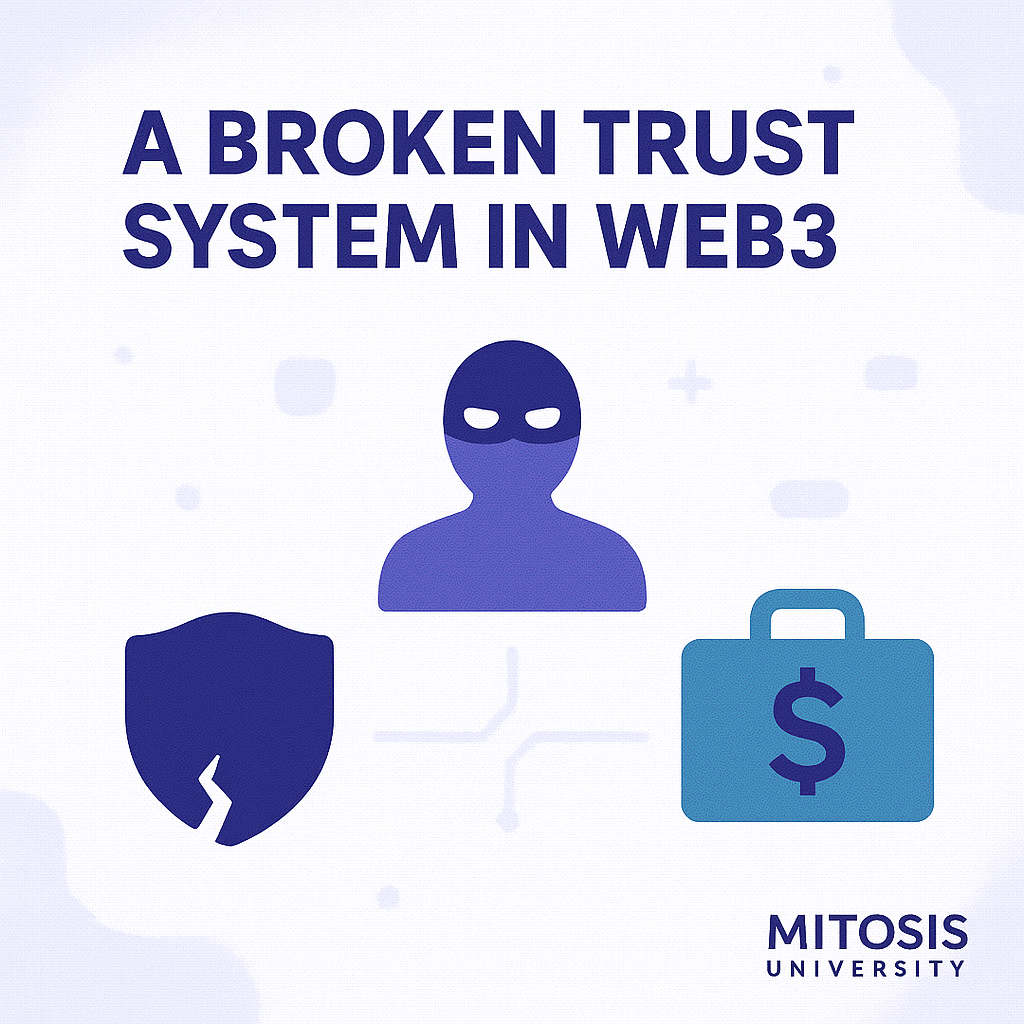Building Trust in Web3: The Ethos Protocol Explained

In the high-stakes world of Web3, trust is both scarce and invaluable. While blockchain promises decentralization and transparency, the ecosystem has become a playground for scammers and opportunists. With billions lost to fraud and a growing mistrust among users, it's clear that Web3 needs more than code—it needs credibility.
Enter Ethos, a platform and protocol built to measure and reward on-chain reputation. By introducing a "Proof of Credibility," Ethos aims to restore trust, align incentives with ethical behavior, and make the crypto world safer for everyone. In this article, you'll learn what Ethos is, how it works, and why it could redefine the way we interact in the decentralized future.
A Broken Trust System in Web3

Web3's core challenge isn't just technical—it's social. The space has shifted from innovation to speculation, with fraudsters exploiting the lack of reliable identity and credibility systems:
- $9.04 billion was stolen globally through crypto fraud schemes in 2022 alone.
- 75% of U.S. investors view current crypto investments as unsafe or unreliable.
- Common credibility signals like Twitter followers are easily manipulated or bought.
Unlike traditional systems—credit scores in finance, reviews in Web2—Web3 lacks standardized tools for assessing trust. Without them, investing becomes guesswork and community-building turns into a gamble.
Ethos's Revolutionary Solution: Proof of Credibility
Ethos proposes a new paradigm: trust is earned, measurable, and economically significant.
Social Staking and Vouching
Instead of mining blocks or validating transactions, Ethos users act as social validators by:
- Vouching: Staking Ethereum to endorse another's trustworthiness.
- Mutual Vouches: Strengthening bonds and credibility through reciprocal staking.
- Unvouching: Retracting support, with consequences to trust signals.
- Slashing: Penalizing bad actors financially or socially when misconduct is proven.
These mechanisms mirror Proof of Stake, but apply it to relationships, not blocks. Credibility becomes expensive to fake—and rewarding to maintain.
Identity Verification through Attestation
Ethos links digital identities on-chain, including wallets and social profiles:
- Requires proof of control (signatures or verified posts).
- No central KYC or Proof of Humanity is needed.
- Attestations are permanent and unique to each Ethos profile.
This prevents impersonation and builds a foundation for long-term, transparent identity management.
Reputation as Data: Reviews and Scoring
Users can leave non-anonymous reviews—positive, neutral, or negative—backed by their own credibility. These reviews:
- Are free to post but must come from verified Ethos profiles.
- Influence a dynamic Credibility Score ranging from 0 to 2800.
- Are weighted by the reviewer’s credibility, their relationship, and history.
Future updates may introduce zkProof-enabled anonymous reviews, balancing privacy with accountability.
Governance and Market Incentives
Ethos isn’t just protocol—it’s a movement governed by its community:
Credibility Consensus
- Participants vote weekly on how the Credibility Score algorithm evolves.
- Early Access relies on centralized implementation, with plans for full decentralization.
- Voting power is earned through on-chain activity, ensuring active and invested governance.
Speculation with Ethos.Markets
Ethos also offers Ethos.Markets, where users can speculate on the reputation of individuals, DAOs, or entities:
- Uses an AMM with a Logarithmic Market Scoring Rule (LMSR).
- Trust vs. Distrust tokens allow for market-driven sentiment analysis.
- Markets are perpetual and non-resolving—reputation is fluid, not binary.
This creates a financial layer to credibility, letting users put their money where their trust is.
3. Conclusion
Ethos is more than a protocol—it's an attempt to rewrite the social contract of Web3. By intertwining identity, reputation, and economic incentives, it reintroduces trust as a core pillar of the crypto experience.
Key Takeaways
- Web3 suffers from a severe credibility crisis that hinders adoption and safety.
- Ethos uses a unique combination of staking, attestation, and governance to create “Proof of Credibility.”
- Credibility is earned through transparent interactions and can be measured, traded, and governed collectively.



Comments ()